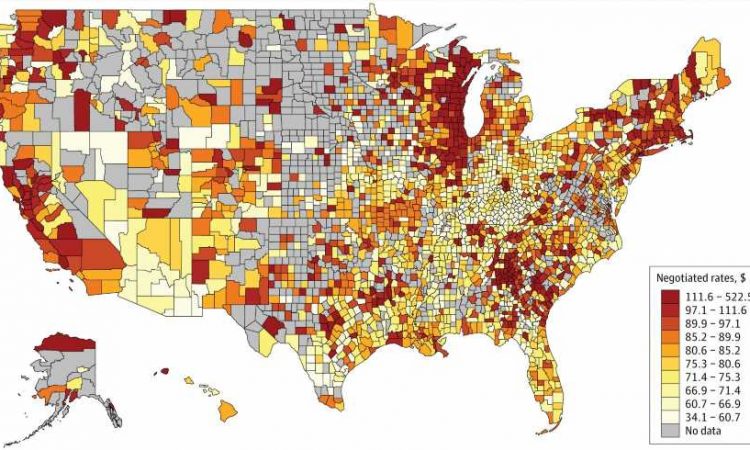
Health care prices—the negotiated rates between insurers and providers such as hospitals and doctors—vary widely across geography even for the same insurer, according to a new study.
For example, a CT scan of the head or brain costs $132 for the 25th percentile provider while the same procedure costs $218 at the 75th percentile provider, according to researchers from Bentley University, Brown University, and the IU Paul H. O’Neill School of Public and Environmental Affairs. The variation in price exists for a variety of shoppable as well as non-shoppable services.
The researchers say that high price variation in health care may be a result of differing levels of quality but also may reflect anticompetitive contracts or consolidation. The findings of the report “Transparency in Coverage Data and Variation in Prices for Common Health Care Services,” are published in the journal JAMA Health Forum.
“High health care prices can be passed on to consumers via higher premiums and out-of-pocket contributions” said Benjamin Chartock, lead author of the study and a professor of economics at Bentley University. “Policy tools which keep prices close to cost without distorting the market are few and far between. But stakeholders are addressing these challenges in new and exciting ways.”
To examine price variation in health care, the research team examined newly available data that was made public under the Transparency in Coverage rule for the national insurer Humana. This new federal policy mandates that health insurers disclose their negotiated health care prices for every provider and for every procedure in an online machine-readable format but has yet to be used in peer-reviewed research.
Researchers examined prices for common health care services, including office visits, emergency room care, colonoscopies, lipid panels, MRIs, hip replacements, and CT scans.
The authors examined both “shoppable” (pre-planned) care as well as “non-shoppable” care because price competition might be stronger in settings where patients have greater choice.
The authors found interquartile ranges of prices (measures of variability) of $69–$114, $251–$456, and $169–$320 for routine office visits, lower limb MRIs, and high-severity ED visits, respectively. In comparison, seminal research from the 1960s finds drastically less price dispersion in other non-health markets such as automobiles and anthracite coal (George Stigler, 1961).
Price transparency regulations—the source of the data in this study—may also provide a lever for employers to negotiate better deals for their health care. And consumers would like to have access to price information, as well. According to the Bentley University/Gallup Business in Society Report, 95% of Americans say health providers should tell them how much their care will cost beforehand but only 17% say that happens.
“While the Transparency in Coverage data are promising, they have not been widely used due to data complexities,” said Christopher Whaley, professor at the Brown University School of Public Health. “After analyzing these data, we find large variation in negotiated prices for many common health care services, suggesting substantial savings from policies that encourage patients to receive care from lower-priced providers.”
“These health care prices data were released only after Congress made it required,” said Kosali Simon, study co-author and Distinguished Professor at the O’Neill School. “We used the data from Humana only because that information structure turned out most possible for us to analyze; more research is needed to understand the findings across all payers.”
More information:
Benjamin L. Chartock et al, Transparency in Coverage Data and Variation in Prices for Common Health Care Services, JAMA Health Forum (2023). DOI: 10.1001/jamahealthforum.2023.3663
Journal information:
JAMA Health Forum
Source: Read Full Article
